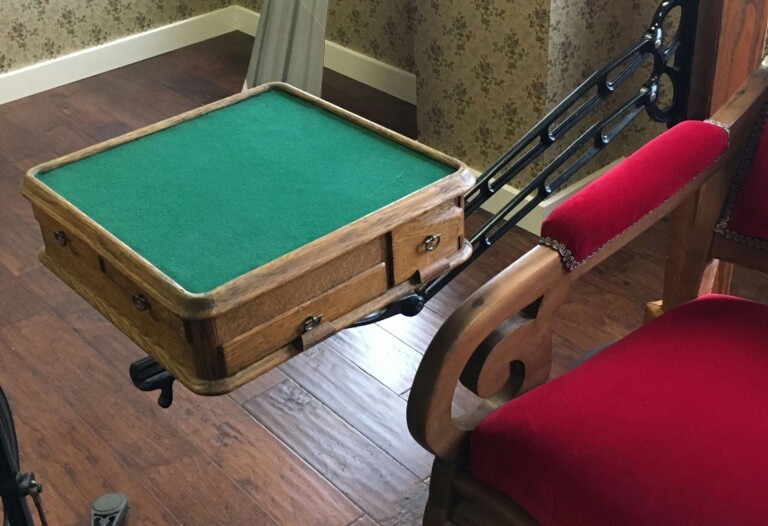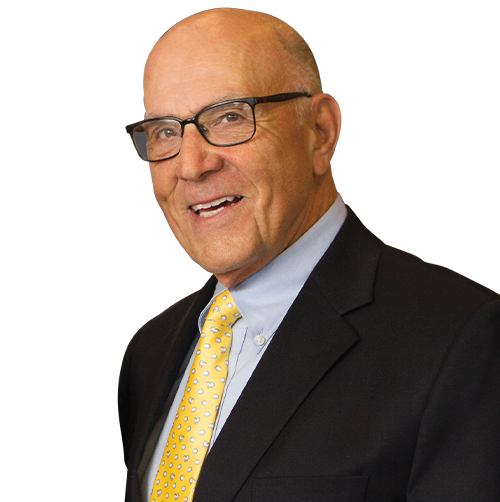America’s largest privately-owned dental distributor has a surprise in store for all who visit its home office situated in the rolling hills of Northeastern Pennsylvania. Neatly tucked amidst the Benco Dental CenterPoint East distribution center and office complex: a fine dental museum.
The brainchild of the company’s Chief Customer Advocate, Larry Cohen and his wife, Sally, the museum features dental artifacts collected by Cohen.
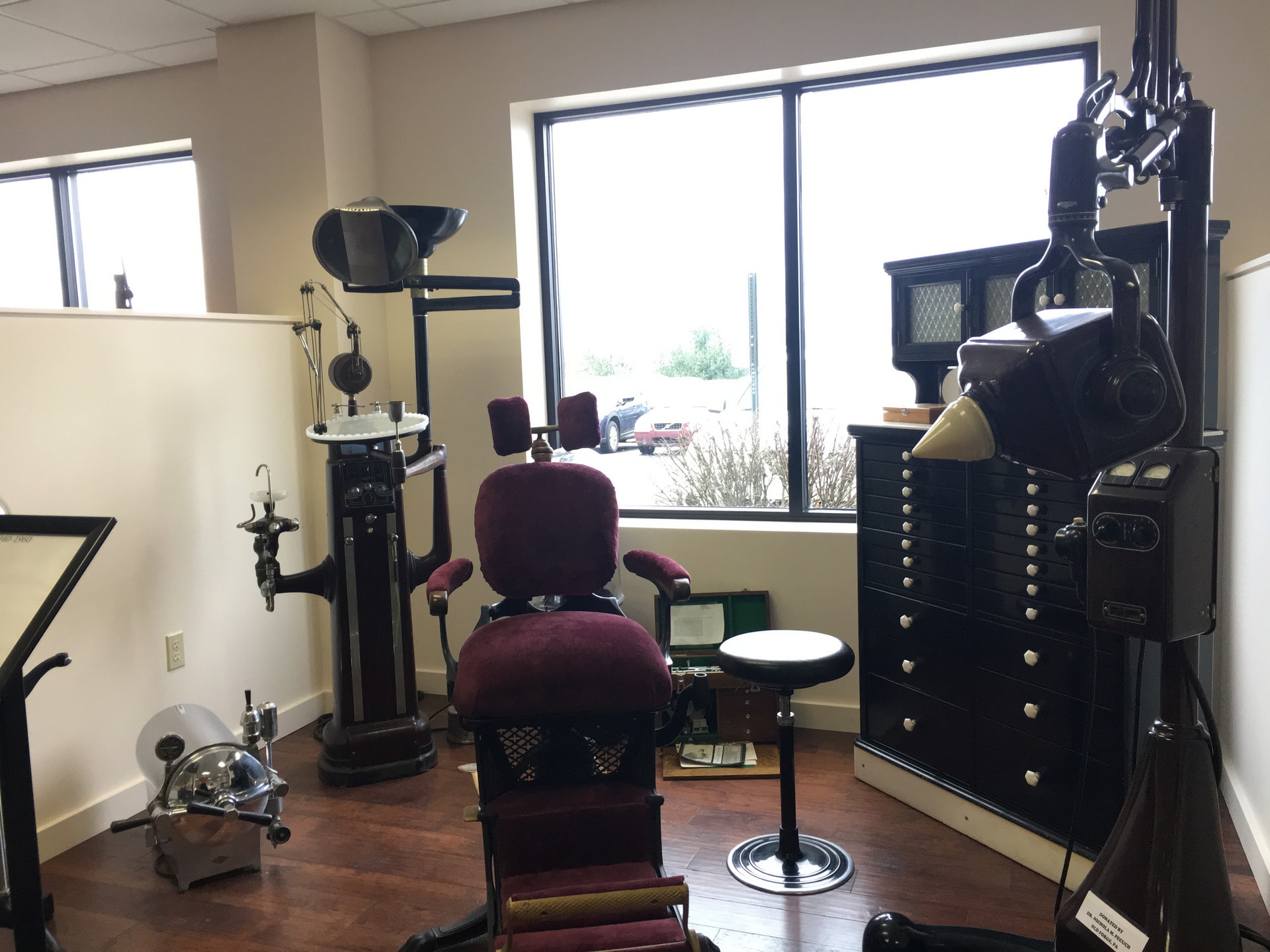 In 2010, when Benco opened the doors of its new home office, Larry brought with him antiques collected from over 40 years of selling dental equipment and supplies. At first, the dental antiques displayed in the front of the building, but when the idea of a dental museum struck, Larry and Sally began to catalog and select items from Larry’s vast collection with sample operatories from every era in mind.
In 2010, when Benco opened the doors of its new home office, Larry brought with him antiques collected from over 40 years of selling dental equipment and supplies. At first, the dental antiques displayed in the front of the building, but when the idea of a dental museum struck, Larry and Sally began to catalog and select items from Larry’s vast collection with sample operatories from every era in mind.
Enter all-around history nerd No. 1
Most of my daily contributions to the Benco team involve expertise as a Database Publishing Production Specialist in the Branding and Communication Department at Benco Dental. However, outside the office, I’m very involved locally in the Lackawanna and Luzerne County historical societies. I have volunteered at museums in Pennsylvania and New Jersey, and I’m am an all-around history nerd.
Larry and Sally enlisted my help, and the rest is… history.
Sally and I spent several weeks cataloging the numerous antiques, even going so far as to seek out those packed away in the depths of the distribution center. We also spent time reviewing websites of other dental museums that are housed in universities, such as the Sindecuse Museum of Dentistry at the University of Michigan.
Eventually, Larry, Sally, and I scheduled a visit to a dentist at the University of Nebraska, who owns an impressive collection of dental antiques.
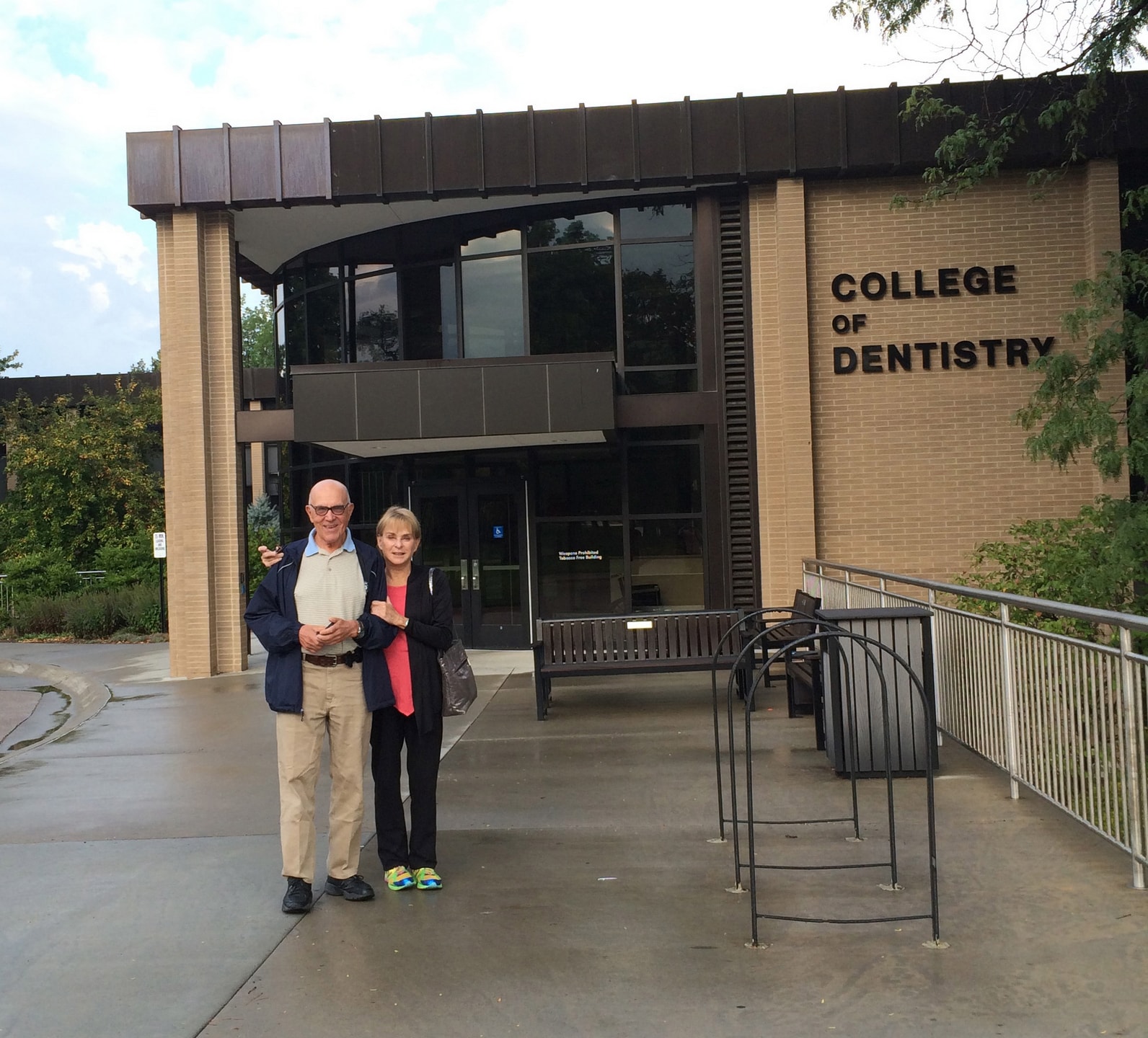
Larry and Sally Cohen prepare to view dental antiques at the University of Nebraska.
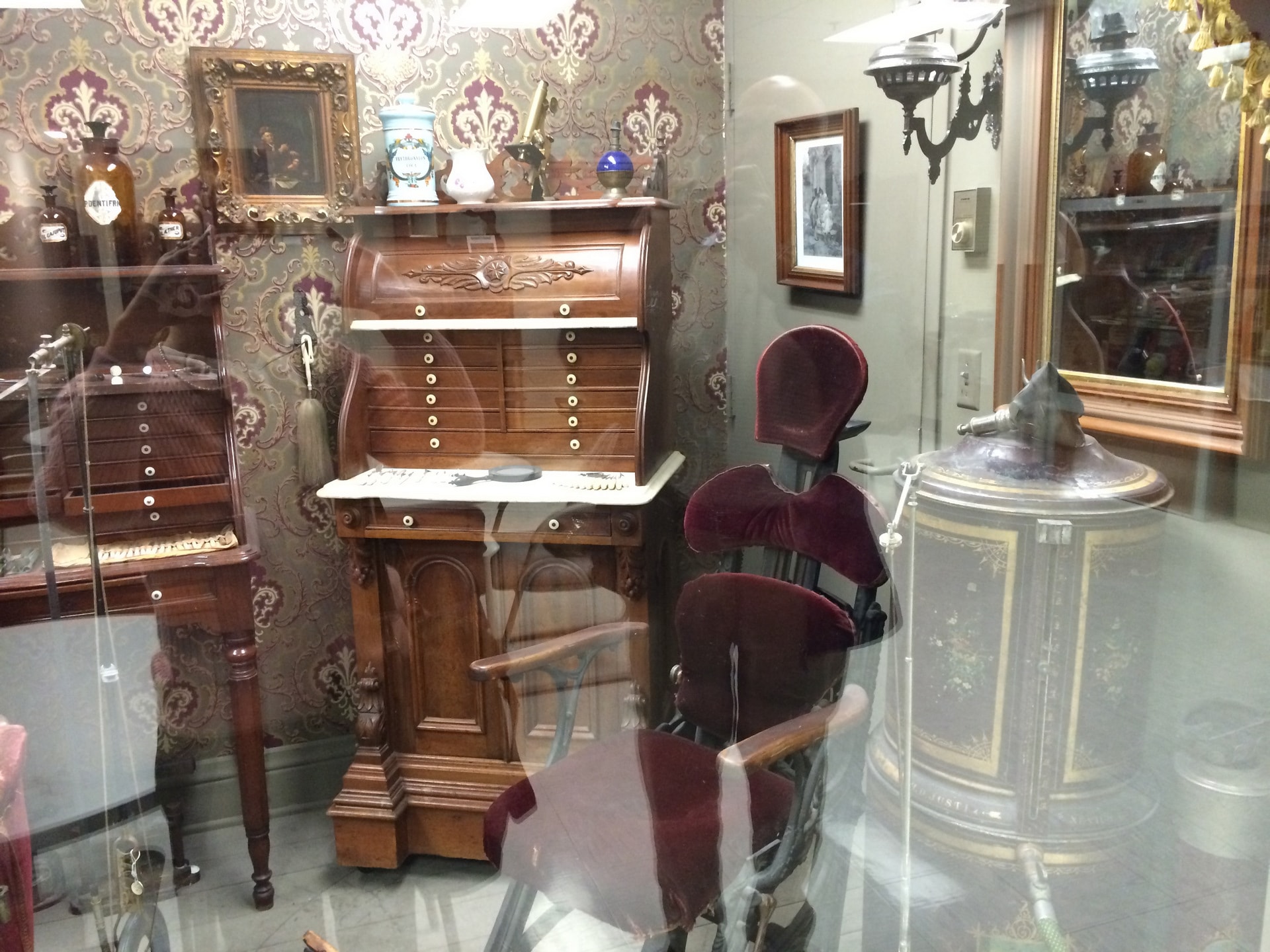
The University of Nebraska’s museum showcases some very early dental equipment.
For me, the visit was an eye opener. Although Larry owned some items also featured at the University of Nebraska, many were new to me.
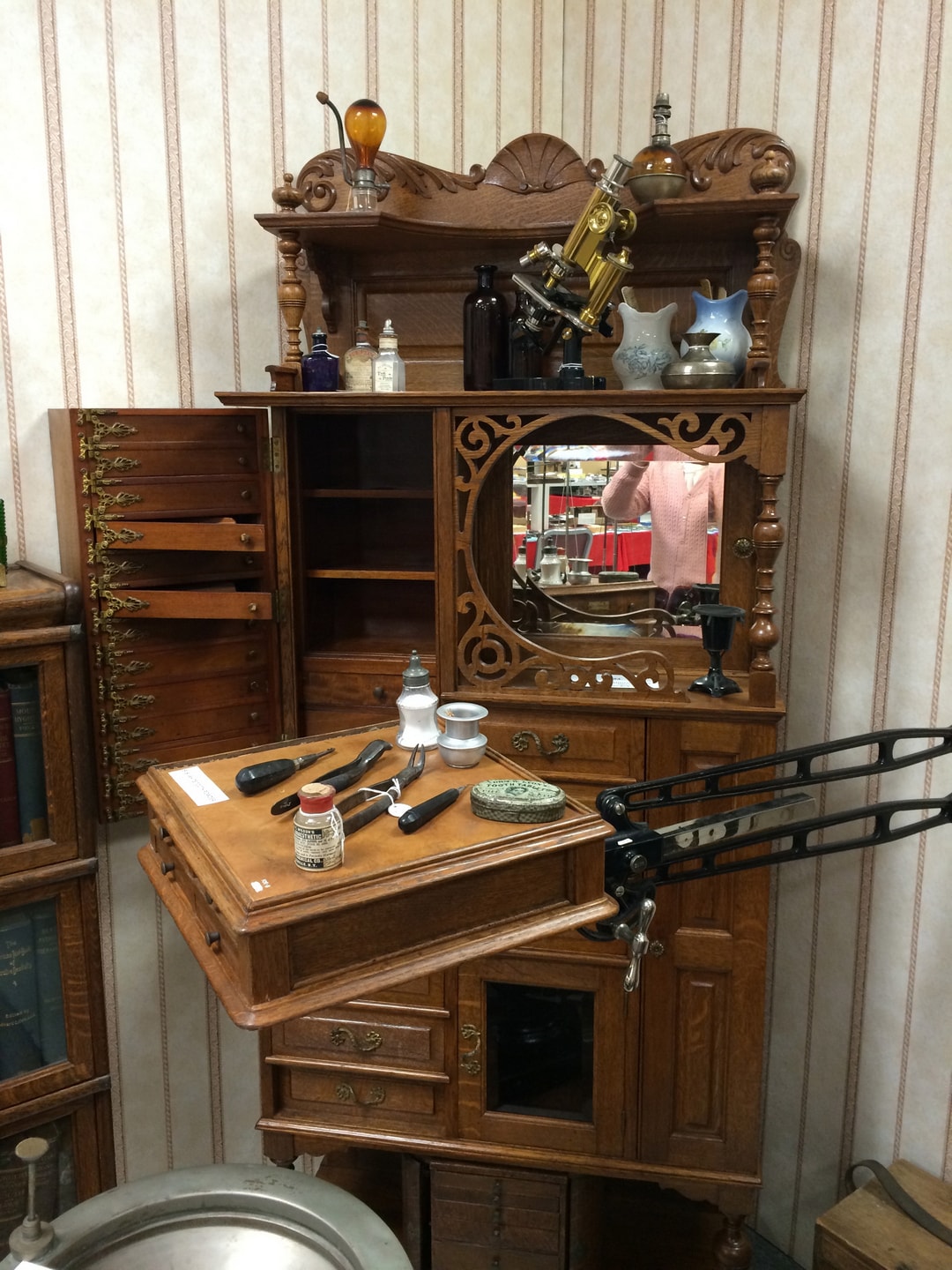
The Benco Dental museum has a similar dental cabinet and instrument tray.
Upon our return, Sally and I rolled up our sleeves and began grouping Larry’s collection chronologically and decided to use the operatories that had been built to showcase the antiques.
Where to start?
After some discussion, we dedicated the first museum operatory to Dr. Lucy Hobbs Taylor, the first American woman to graduate with a dental degree and the woman for whom Benco has named its Lucy Hobbs Project. Dr. Hobbs Taylor practiced dentistry from the late 1860s to the early 1900s, so late 1800s became our chronological starting point. The only problem: we lacked a photo of her dental office.
What we did know from her autobiographical story from the Kansas Historical Society: Dr. Hobbs Taylor owned a prized dental chair. Larry’s extensive collection did not include such a chair, so Sally and I set out to find one.
On a quest for a late 1800s dental chair
First, we had to educate ourselves. On the web, we combed various antique dental catalogs, such as an SS White catalog from 1867, which was the approximate time frame that Dr. Hobbs started her career.
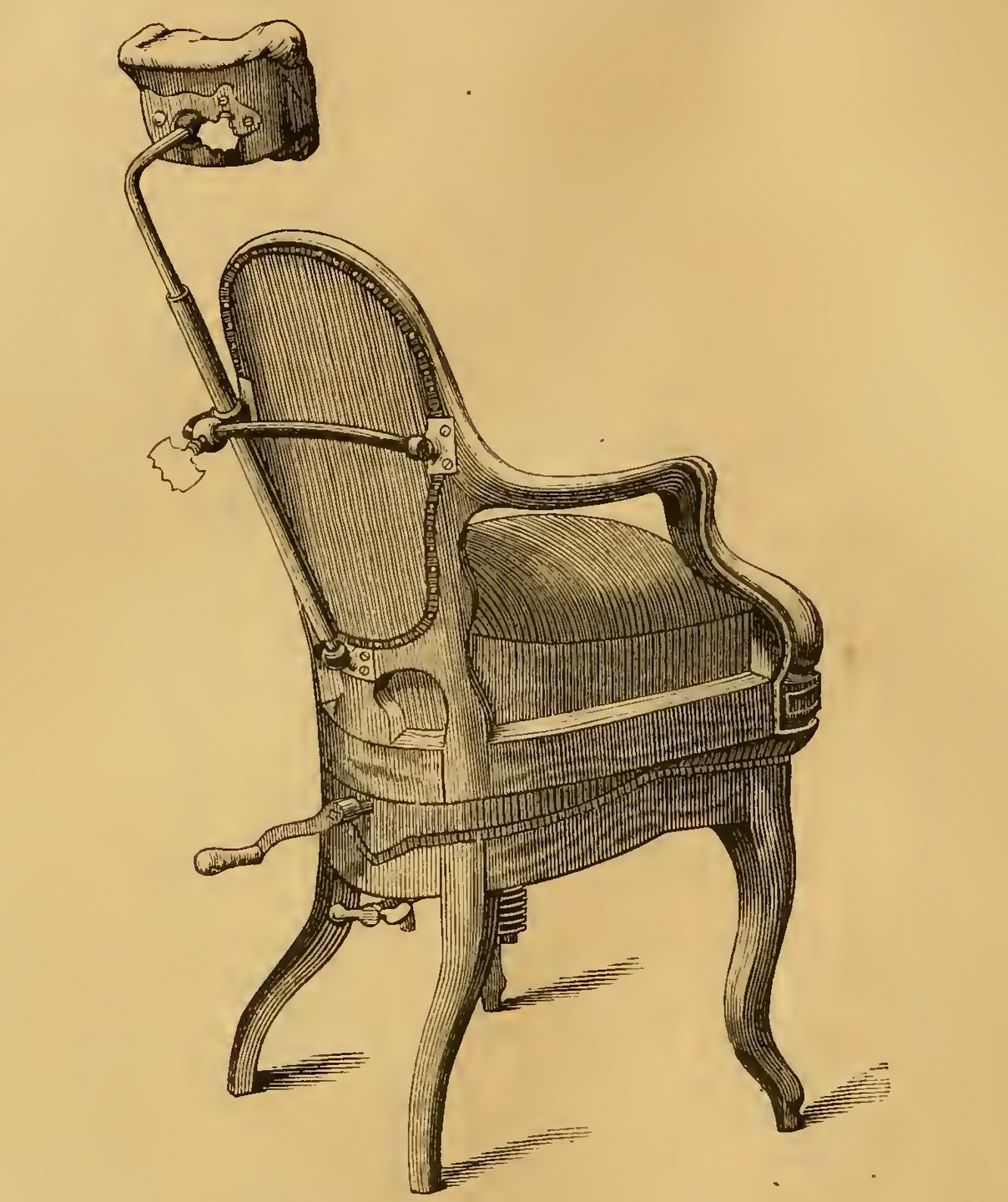
A state-of-the-art dental chair, circa 1867.
We found a dental chair that looked similar to one that I’d been contemplating purchasing on eBay.
In one click it was on its way to the Benco home office. The chair arrived in a shabby state, not fit for the museum. Enter Benco Dental’s trained team of expert furniture reupholsterers! They normally dedicate their efforts to refurbishing the dental chairs and stools of Benco customers, but they accepted the challenge of this extensive historic restoration.
After some detective work to uncover the original fabric covering of the chair, the reupholstery team got to work restoring the wood, and replacing the exterior layer of worn fabric and the original layer of fabric. Thanks to their fantastic work, the restoration now occupies pride of place in the museum’s operatory dedicated to Dr. Lucy Hobbs Taylor.
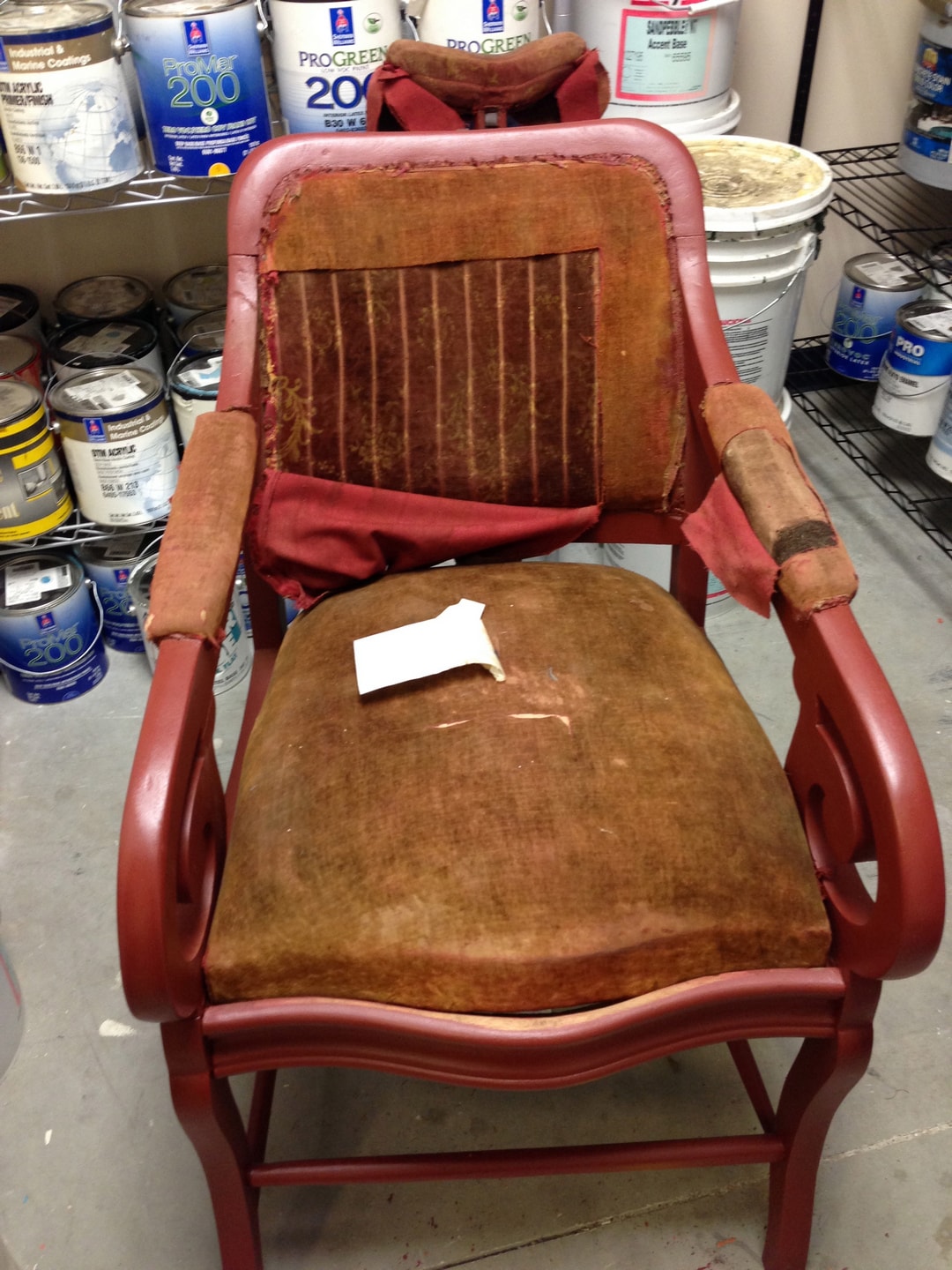
BEFORE: What’s under here? The original fabric!
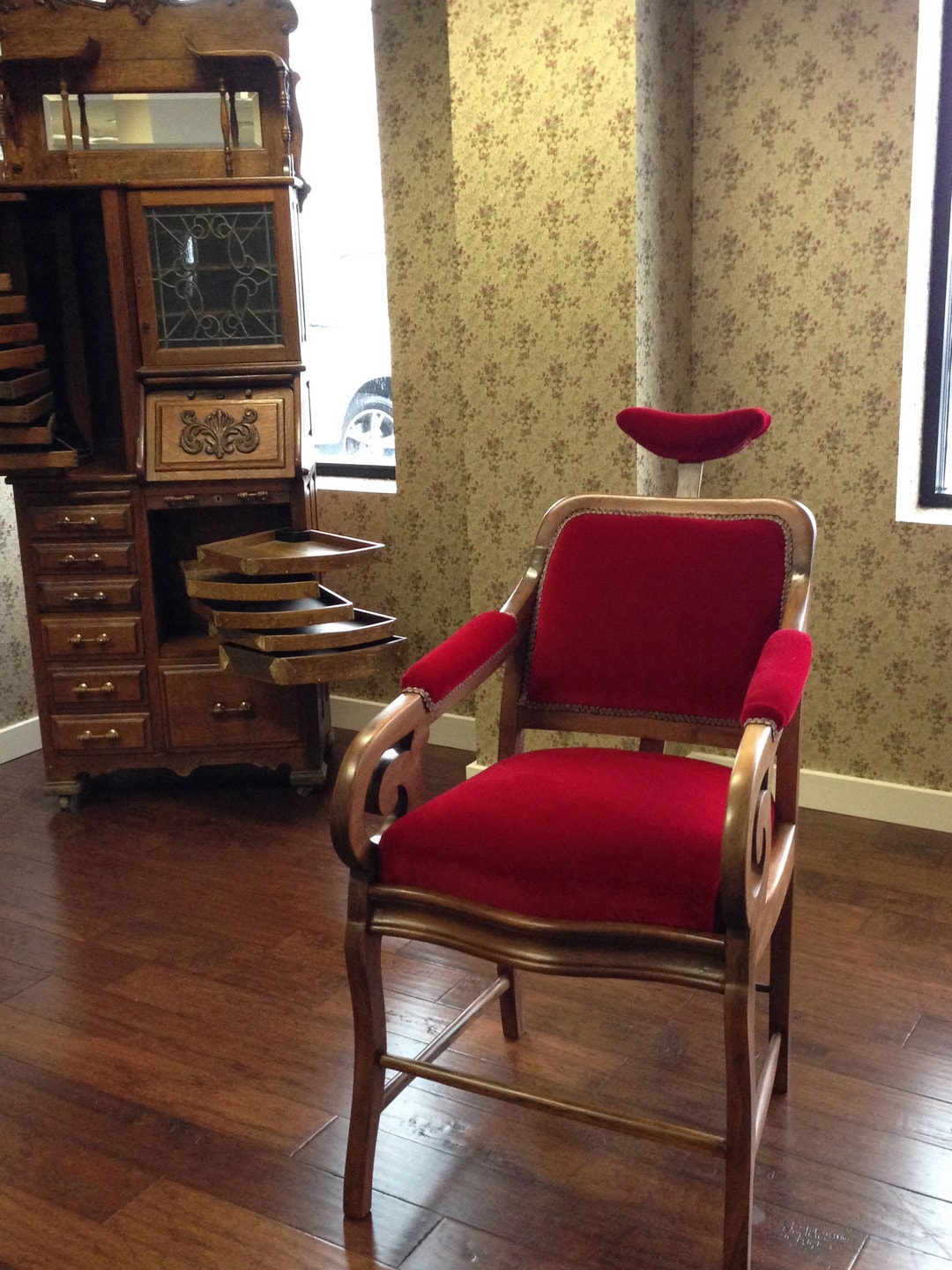
AFTER: Thanks to Benco Dental’s reupholstery department, a Dr. Lucy Hobbs-era chair is restored to its former glory.
Once the chair was restored, it was a matter of setting up the other operatories chronologially, from the late 1800s to the late 1960s.
In order to date the various dental antiques, we again referred to online antique dental catalogs and used antique catalogs in Larry’s collection. Some of the items were unfamiliar to me, like the Ritter distribution panel from 1919, pictured below.
We perused quite a few catalogs until we found its twin in a vintage Ritter catalog.
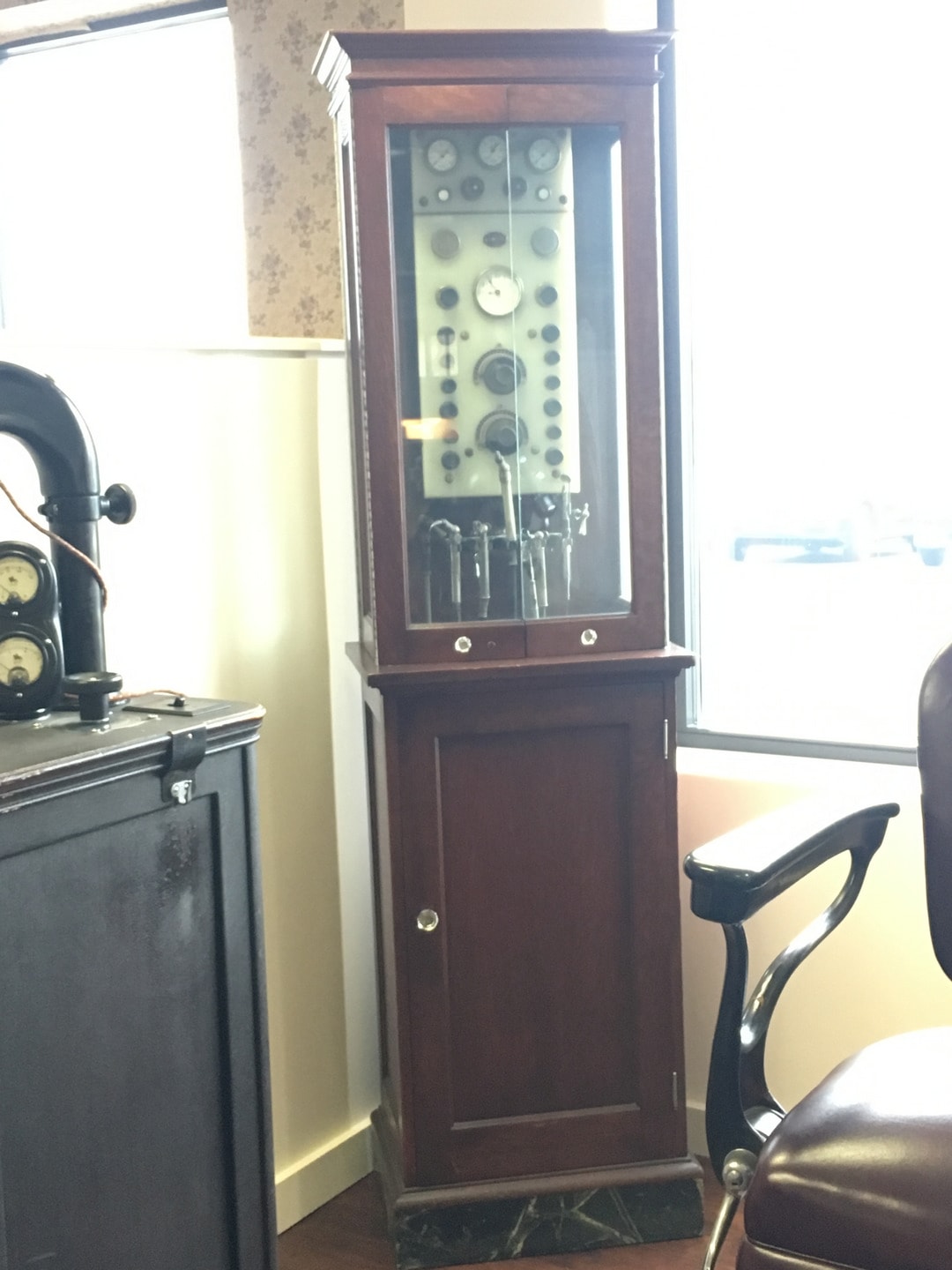
The Ritter distribution panel supplied electricity to newfangled electric handpieces in 1919.
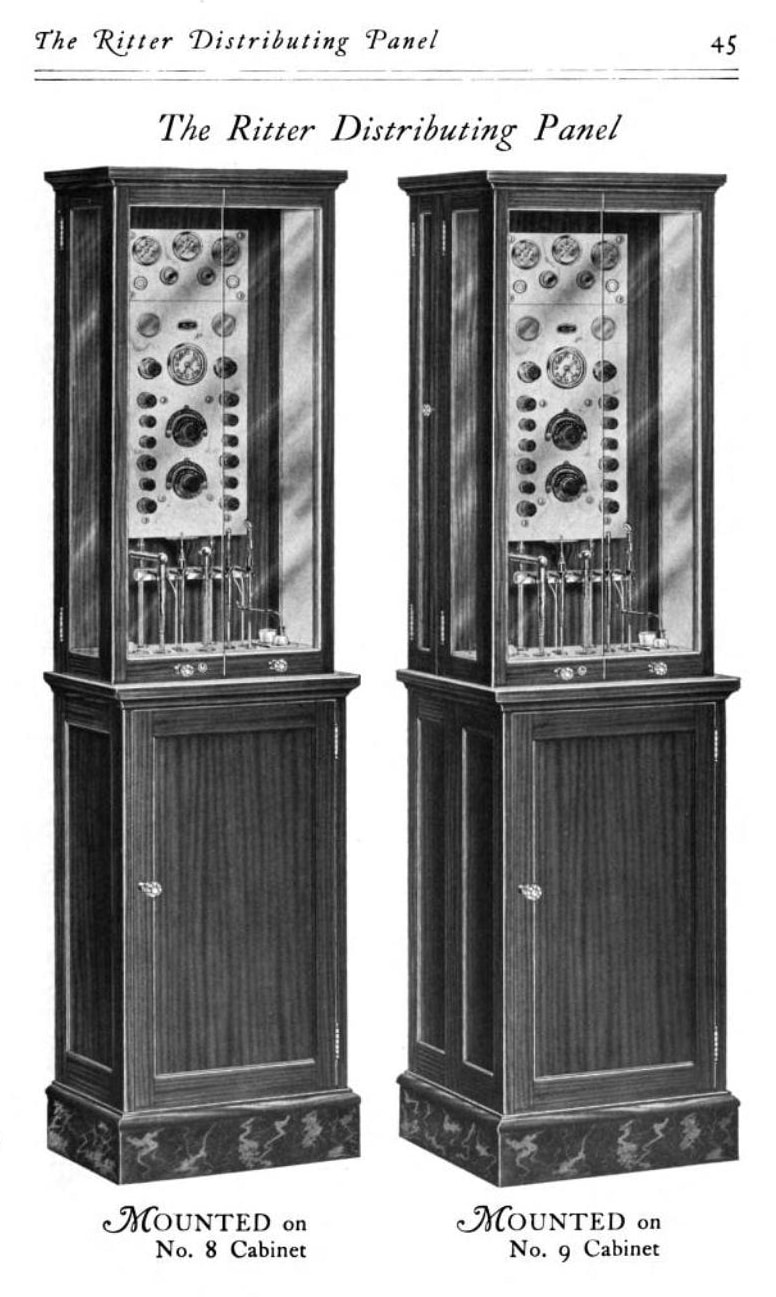
Above, the original Ritter distribution panel product listing from the company’s 1919 catalog.
We did the same for the rest of the dental artifacts. The research made it easier to create the signage that now exists in the museum and offered knowledge about the individual items and the companies that manufactured and sold them.
Some of the items in the museum not only have historical significance in dental history, but also in the history of the Cohen family, which founded Benco Dental in 1930 and leads it still today.
According to Sally Cohen, the chair and dental unit in Washington Coral (a popular color in the middle of the 20th century) belonged to the brother of Benco Dental founder Benjamin Cohen. It is representative of the type of dental equipment many Baby Boomers remember from dental visits in their youth.
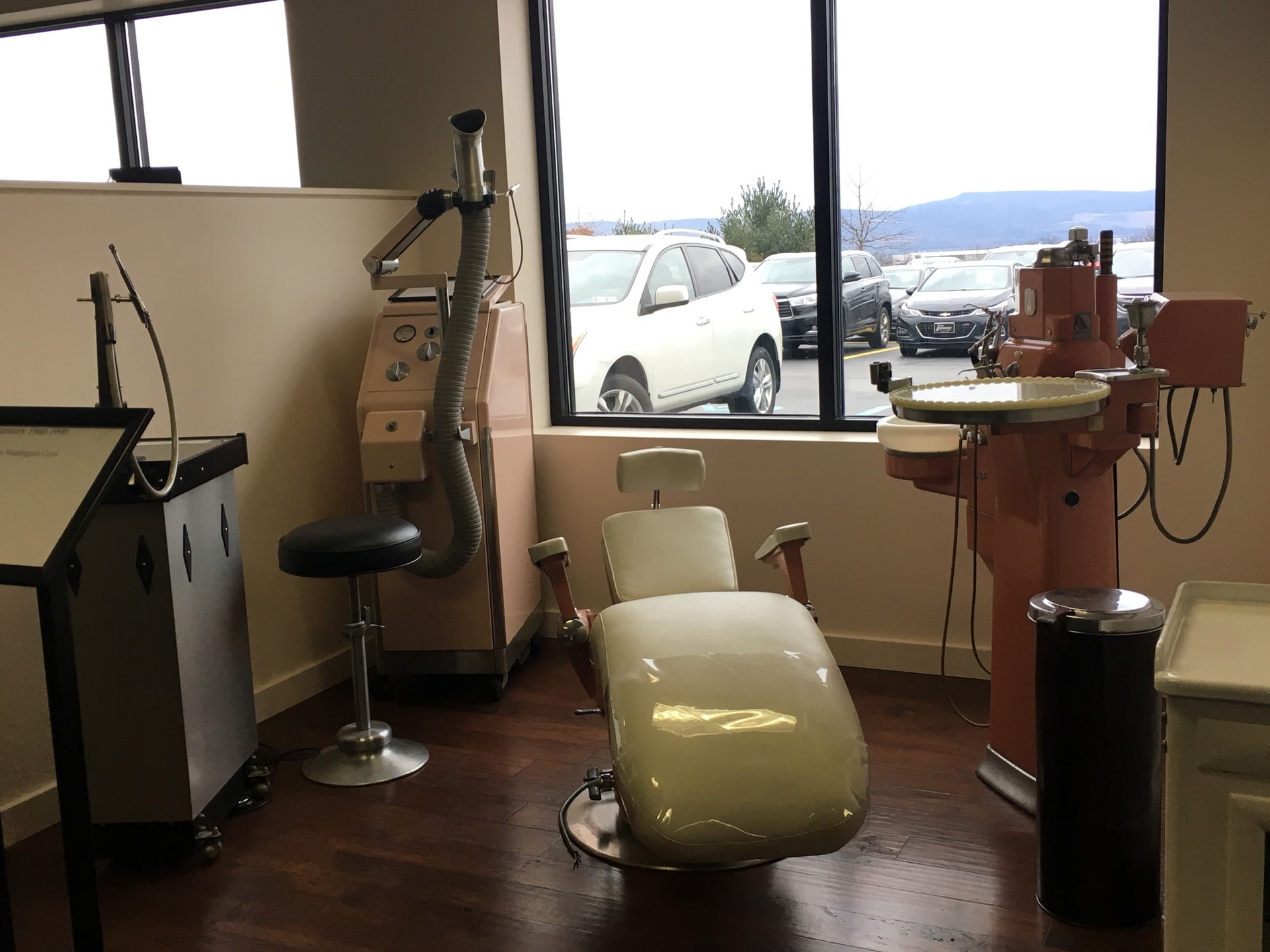
Washington Coral, a favorite color for dental equipment, kitchen chairs, and cars in Mad Men-era America.
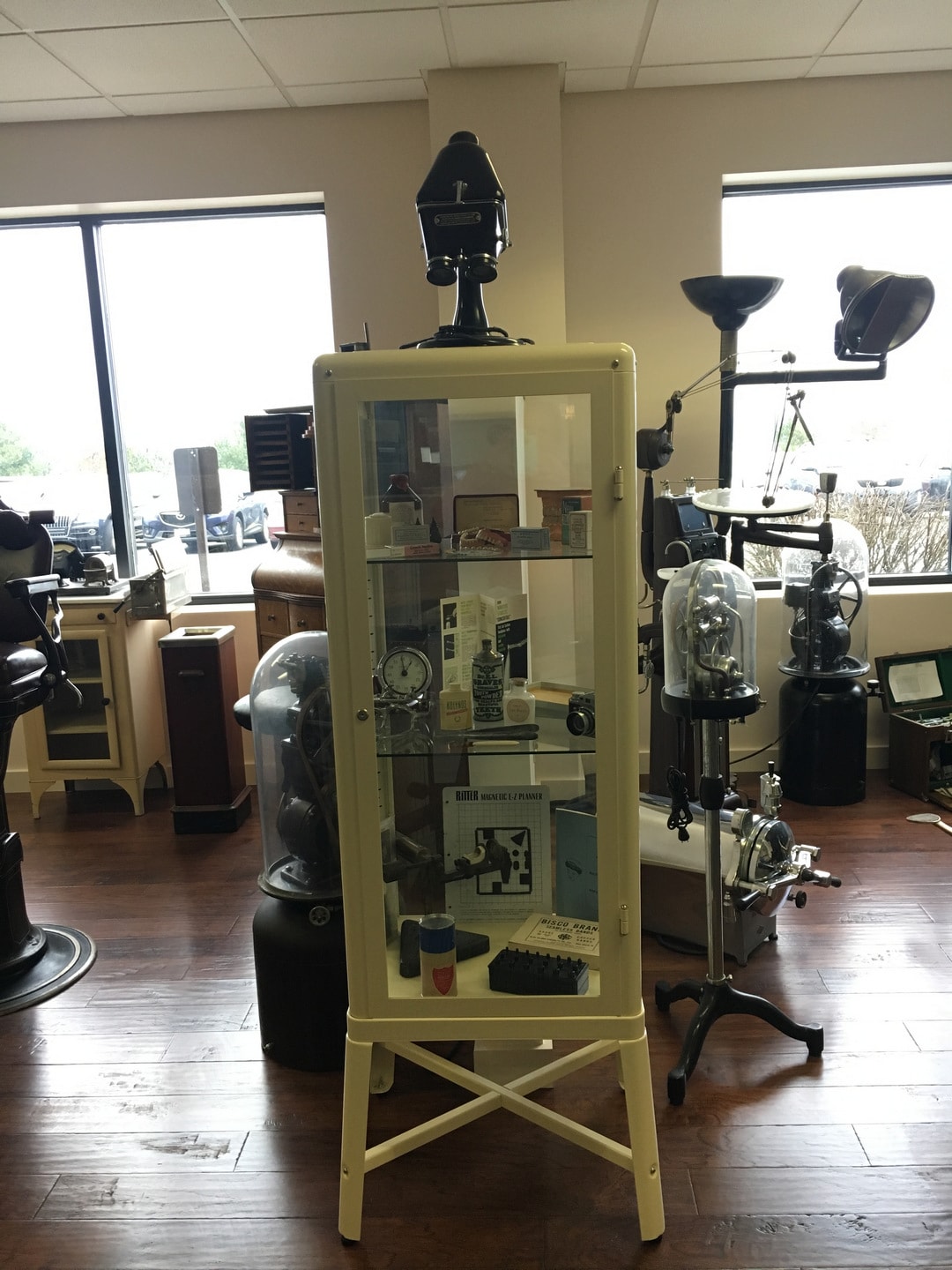
On display at the Benco Dental museum: several cases chock full of small dental antiques.
In addition to its historical operatories, the museum features several cabinets of smaller dental artifacts. Many of these items are fascinating and easy to miss if you don’t look carefully.
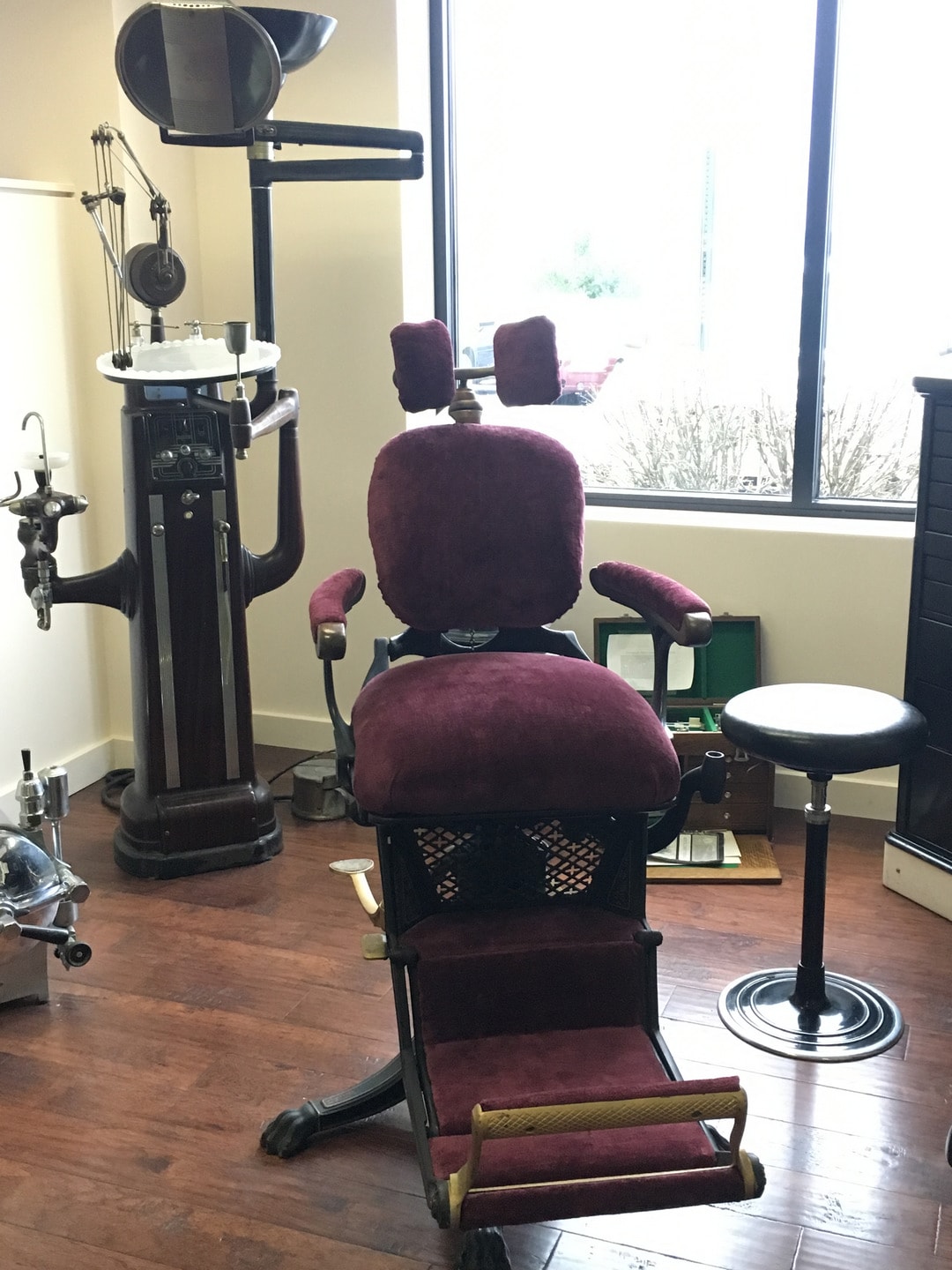
An advertisement for a similar chair is featured in an antique dental publication. When new, the chair was an expensive piece of equipment, meant to impress the patient.
One item I am especially proud to show museum visitors is a beautiful late 1800s dental chair in wonderful condition (shown at left).
There is much more to the museum than these photos demonstrate. It is always changing, as Larry and other associates discover forgotten dental history and bring it to my attention.
To view additional artifacts from Larry’s collection, visit: IncisalEdgeMagazine.com
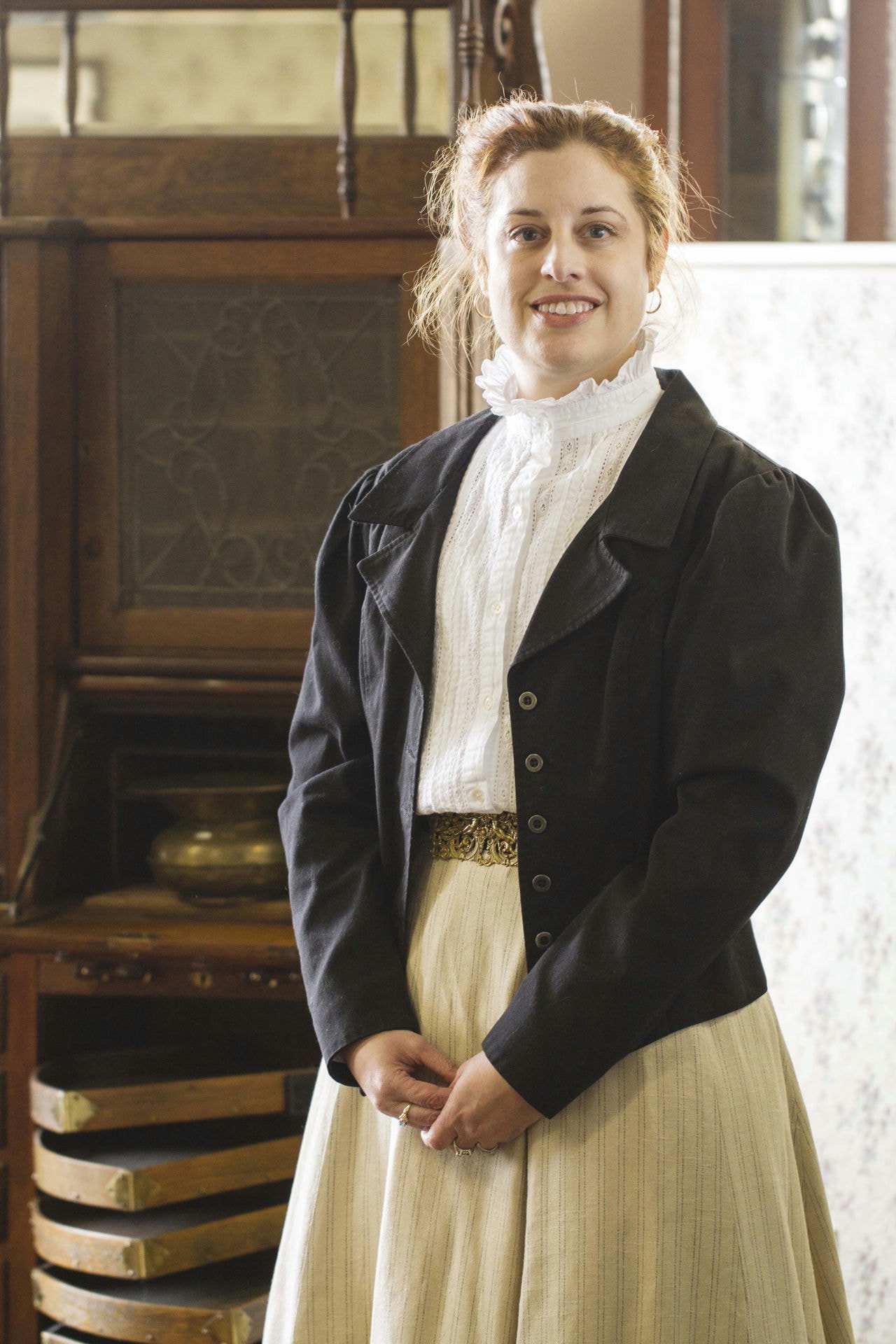
Museum trivia: In a life-size cutout of Dr. Lucy Hobbs Taylor on display in the museum, a photograph of me modeling period-accurate fashion, was incorporated as the body of Dr. Hobbs Taylor.


